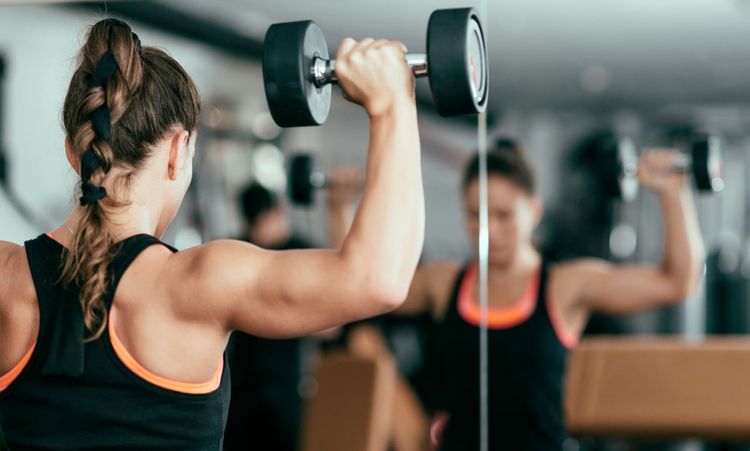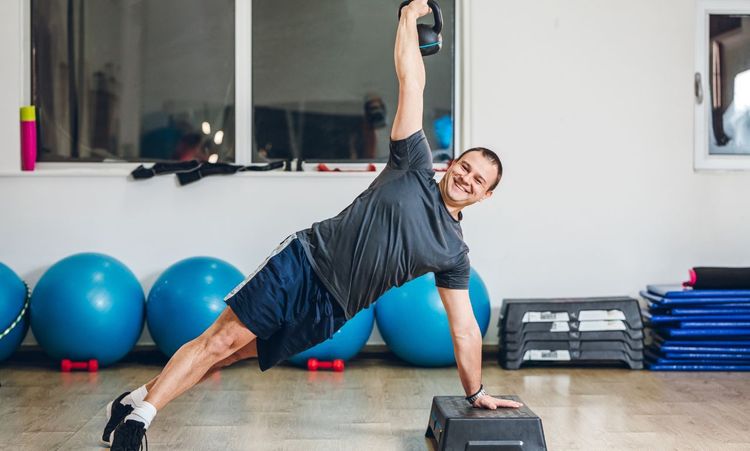Weightlifting, often perceived as a purely physical pursuit, is in reality a delicate dance between strategy and exertion. It's about understanding your body's capabilities, pushing its limits responsibly, and harnessing the power of progressive overload. Are my sets pushing me towards my goals, or am I just going through the motions? The answer lies in understanding the essence of what is a working set weight lifting.
What is a Working Set?
Imagine your workout as a well-structured story. You have the introduction, the rising action, the climax, and the resolution. In this narrative, what is a working set of weight lifting is the climax, the point where your muscles are truly challenged, and the story of your fitness journey unfolds.
In technical terms, it refers to a specific number of repetitions (reps) of an exercise performed consecutively with a predetermined weight, followed by a rest period. It's not just about lifting heavy; it's about lifting strategically. Each rep, each set, contributes to the bigger picture of your fitness goals.
Purpose of Working Sets

The purpose of this extends far beyond simply building muscle or increasing strength. They are the building blocks of a comprehensive fitness regimen, designed to:
- Stimulate Muscle Growth (Hypertrophy): Working sets create microscopic tears in your muscle fibers. During rest and recovery, your body repairs these tears, making the muscles bigger and stronger.
- Enhance Strength and Power: By consistently challenging your muscles with progressively heavier weights, working sets help increase your ability to generate force.
- Improve Muscular Endurance: Working sets with higher reps and lighter weights can enhance your muscles' ability to sustain activity for extended periods.
- Boost Metabolism: Building muscle mass through working sets can elevate your metabolism, aiding in weight management.
- Strengthen Bones and Joints: The controlled stress placed on your bones during working sets can increase bone density, reducing the risk of osteoporosis and other bone-related issues.
Differences Between Working Sets and Warm-Up Sets
While both are crucial components of a workout, working set, weight lifting and warm-up sets serve distinct purposes. Think of warm-up sets as the prelude, preparing your body for the main performance.
Warm-up sets:
- Utilize lighter weights and higher reps to gradually increase blood flow to the muscles and prepare them for the heavier loads to come.
- Focus on perfecting form and technique, minimizing the risk of injury during working sets.
- Serve as a rehearsal, allowing your body to adapt to the movement patterns of the exercise.
Working sets:
- Involve heavier weights and lower reps, pushing your muscles to their limits.
- Aim to induce muscle fatigue and stimulate muscle growth.
- Demand maximum effort and focus, requiring proper form and breathing techniques.
Key Components of Weight Lifting
To truly understand the significance of this, it's essential to grasp the fundamental elements that constitute a well-rounded weightlifting program:
1. Reps and Their Importance
Reps, short for repetitions, refer to the number of times you perform an exercise consecutively without pausing. They are a crucial variable in determining the outcome of your training.
- Low Reps (1-5): Ideal for building strength and power, as they allow you to lift heavier weights.
- Moderate Reps (6-12): The sweet spot for muscle growth (hypertrophy), striking a balance between weight and volume.
- High Reps (15+): Effective for improving muscular endurance and promoting cardiovascular health.
2. The Role of Sets in Training
A set is a group of repetitions performed consecutively, followed by a rest period. The number of sets you perform directly influences the overall volume of your workout.
- Beginners: Starting with 1-2 sets per exercise allows your body to adapt to the demands of weightlifting.
- Intermediate/Advanced: Gradually increasing to 3-4 sets per exercise can further stimulate muscle growth and strength gains.
3. Understanding Rest Intervals:
Rest intervals, the pauses between sets, are not merely breaks; they are strategic pauses that allow your body to recover and prepare for the next bout of exertion.
- Short Rest Intervals (30-60 seconds): Ideal for hypertrophy and muscular endurance, as they keep your heart rate elevated and promote muscle fatigue.
- Moderate Rest Intervals (1-2 minutes): Suitable for strength training, allowing for adequate recovery between sets to lift heavier weights.
- Long Rest Intervals (3-5 minutes): Primarily used in powerlifting and Olympic lifting, where maximal recovery is needed to lift extremely heavy loads.
4. Choosing Appropriate Weights
Selecting the right weight for your working sets is crucial for maximizing results and preventing injury. The weight should be challenging enough to induce muscle fatigue within the desired rep range, yet manageable enough to maintain proper form.
5. Factors Influencing Weight Selection
- Training Experience: Beginners should start with lighter weights and gradually increase the load as they gain strength and experience.
- Fitness Goals: The weight you choose should align with your specific fitness objectives, whether it's building muscle, increasing strength, or improving endurance.
- Exercise Selection: Compound exercises, which engage multiple muscle groups, generally allow for heavier weights compared to isolation exercises that target specific muscles.
- Recovery Status: Your body's ability to recover from previous workouts can impact your performance. Adjust the weight accordingly if you're feeling fatigued.
Goals for General Fitness

For those seeking overall fitness and well-being, a balanced approach to weight selection is key. Aim for a weight that allows you to perform 8-12 reps with good form, gradually increasing the weight as you get stronger.
Goals for Strength and Muscle Growth
If your goal is to pack on muscle and increase strength, embrace the challenge of heavier weights. Opt for a weight that allows you to perform 6-8 reps with good form, pushing yourself close to muscle failure.
Goals for Power and Muscular Endurance
Developing explosive power or enhancing muscular endurance requires tailoring your weight selection accordingly. For power, focus on lower reps (1-5) with heavier weights, emphasizing speed and explosiveness. For endurance, opt for higher reps (15+) with lighter weights, challenging your muscles' ability to sustain activity.
Conclusion
Understanding the concept of what is a working set weight lifting is akin to unlocking a secret code in the world of fitness. It's about moving beyond the superficial and delving into the strategic nuances that transform workouts from mere exercise to purposeful sculpting of your physique and abilities. By embracing the principles outlined in this guide, you equip yourself with the knowledge to navigate the weight room with confidence, pushing your limits responsibly and achieving your fitness aspirations. Remember, the journey to a stronger, healthier you begins with a single, well-executed working set.




